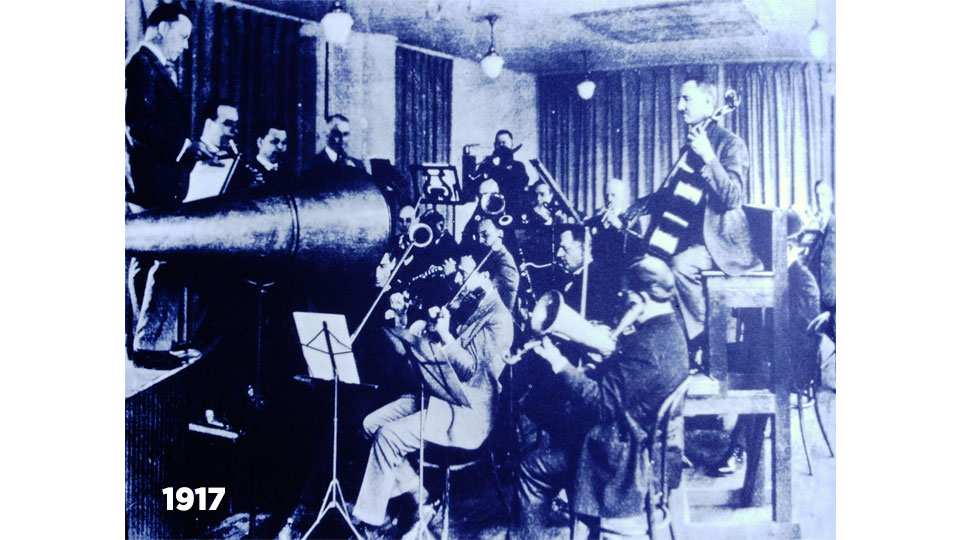The Orchestra's First Album
by RaeNosa Onwumelu
On Saturday, January 13, 1917, the Cincinnati Symphony Orchestra (CSO) and conductor Ernst Kunwald, the third music director in the Orchestra’s 125-year history, headed to New York to record their first commercial album inside of Columbia Gramophone Company’s Studio.

The setup was far from glamorous. They had a few sound engineers, but no individual microphone set-ups for instruments, such as those used in 2019’s Music Hall recording of Gershwin’s An American in Paris. Only half of the CSO’s current 90-member orchestra would have fit inside of the small Gramophone studio, where a single large horn recorded the entire group. Nevertheless, in May, The Triumphal Entry of Bojaren (Halvorsen) and Waltz of the Hours from Coppélia (Delibes) became the first 12-inch record released from the three-day CSO winter recordings, selling for $1.50 each (which is about $21 today).
Columbia Records described the CSO’s exclusive release of The Triumphal Entry of the Bojaren as, “A splendid introduction to the powers of the Cincinnati Orchestra” and Delibes’ “Waltz” as, “The orchestra’s greatest achievement.”
In July 1917, the CSO released another record from the January recordings (the Barcarolle from Offenbach’s The Tales of Hoffmann with Strauss’s On the Beautiful Blue Danube) and began an historic collaboration, which, over the next two years, produced approximately 30 acoustic 80 rpm albums.
The ensemble was the third orchestra to record for Columbia, preceded by the Philharmonic Symphony of New York and the Chicago Symphony Orchestra. Prior to these recordings, music companies preferred vocal recordings over symphony orchestra recordings because labels considered the former more profitable. New technical improvements in the acoustical recording process enabled record companies to produce music that had been generally avoided—that of symphonic recordings.
The CSO went on to record with several labels, including Camden Records, Remington Records and RCA Victor until the late 1950s, before landing an exclusive contract with Decca Records. In 1978, the Orchestra signed with Telarc and recorded The 1812 Overture, which became one of the most in-demand classical recordings ever. Conducted by Pops founder Erich Kunzel, The 1812 Overture became the highest selling album in Telarc history, with more than 800,000 copies sold since its release. The CSO continued to record with Telarc until 2011, after which it started its own label, Cincinnati Symphony Orchestra Media, later renamed Fanfare Cincinnati.
The Cincinnati Symphony Orchestra and the Cincinnati Pops have released more than 15 albums collectively since the label’s inception, and more than 275 albums collectively in the organization’s 125-year history. Fanfare Cincinnati has also released albums for the Cincinnati Opera, May Festival Chorus and Vocal Arts Ensemble.
This past November, the Recording Academy nominated two CSO recordings for Grammys: Transatlantic, the CSO’s latest release, for Best Orchestral Performance and the Pops’ American Originals: 1918 for Best Classical Compendium.
The record business has transformed greatly since the CSO’s first album was made in 1917, but the ensemble’s commitment to recording timeless music will further the Orchestra’s legacy well beyond its 125th year.